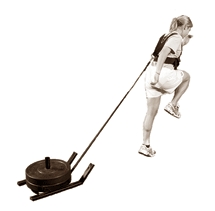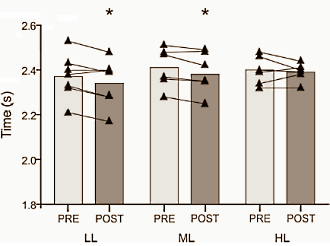|
Definition: "An ergogenic aid is any substance or phenomenon that enhances performance "
|
|
||||||||
13.06.2014 |
|
|
Resisted sprints make athletes faster and more agile
Trainers of athletes that do team sports and martial arts have been using resisted sprint training for decades to improve their athletes' acceleration capacity. Reading the literature you'll learn that the method is most useful for increasing athletes' speed in the first 20 metres of a sprint.
The researchers at Pablo de Olavide University wondered whether it made any difference the amount of weight there was on the sled so they did an experiment with 19 male student subjects. All subjects trained twice a week with a weighted sled for a period of seven weeks. They did 4-8 sprints, with distances varying from 20 to 35 metres. The students rested for 3-4 minutes between sprints.
The researchers divided the students into three groups. The first group trained with a sled that had been weighted with 5 percent of the subjects' bodyweight [LL], the second group trained with 12.5 percent of their bodyweight [ML] and the third group with 20 percent of their bodyweight [HL].
But when they looked at the effect of the training on the first 20 metres, they noticed that only the subjects that had trained with the heaviest weight had become faster.
When the researchers looked at the effect on the last 20 metres, only the subjects who had trained with 5 and 12.5 percent of their bodyweight showed better times.
"The results of our study would suggest that in order to improve the acceleration phase over short distances it is advisable to train with different towed loads", the researchers summarise.
"To improve the initial acceleration phase up to 30 meter, it would be advisable to train with loads about 20 percent of body mass. However, to improve the flying phases within 40 meter, loads between 5 percent and 12.5 percent should be used."
Source:
More: |
|




